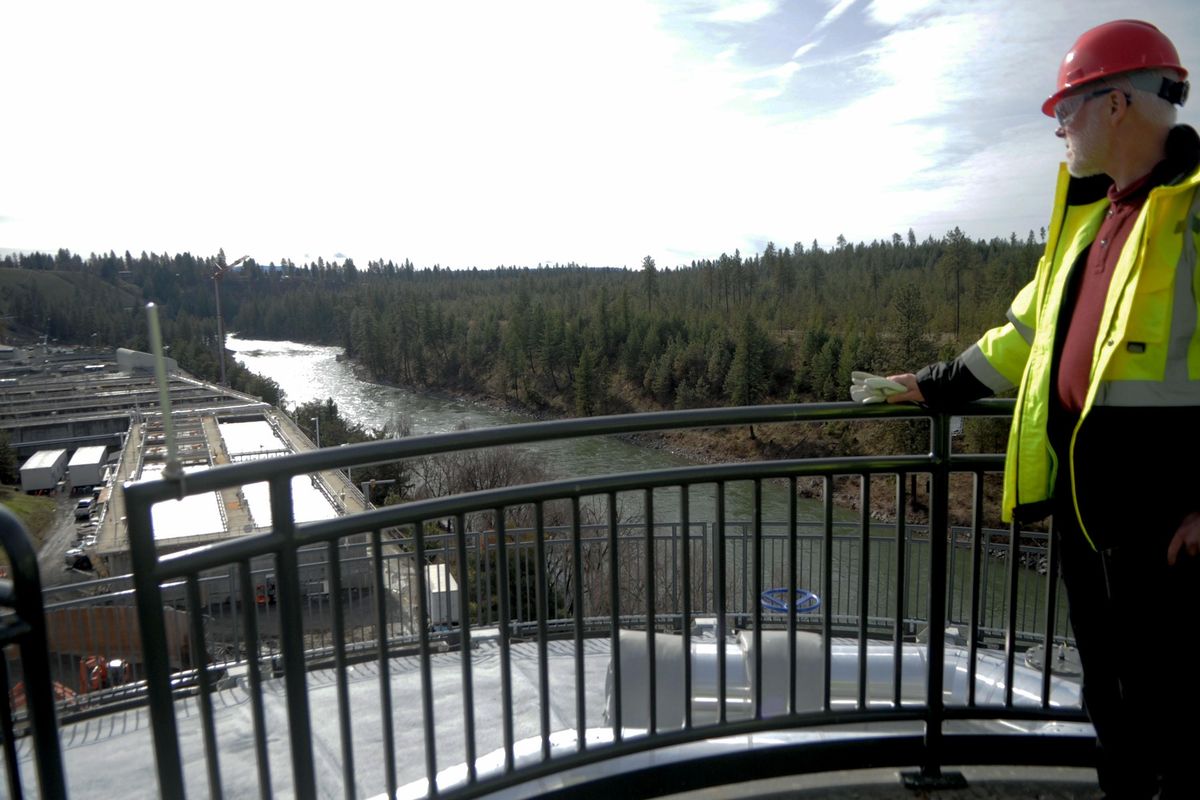Spokane considers burning sewer sludge after outcry over fertilizer use

The sprawling, 36-acre water treatment plant on the banks of the Spokane River northwest of town is essentially a giant human digestive system.
That was evident Monday morning, nine stories above the ground atop a massive chamber where bacteria were breaking down the collected remnants of the city’s sewer pipes.
“There’s a whiff of methane gas, there,” said Lars Hendron, a principal engineer at the city’s Riverside Park Water Reclamation Facility, as the scent of flatulence filled the crisp morning air.
The waste water, once it’s been treated with chlorine and other chemicals to scrub contaminants, is returned to the river through a flume. For decades, leftover solid waste has been fed through a bacteria chamber, called a digester, dried and then shipped to farms surrounding the city for use as fertilizer. Late last month, the city signed a contract to explore the possibility of burning that sludge at its Waste-to-Energy plant amid concerns the so-called “biosolids” retained chemicals that could be harmful if absorbed in the ground water.
“There were concerns about what we are going to do with biosolids,” said Marlene Feist, director of strategic development for the public works and utilities department. “With this facility that we are fortunate to have, it makes sense to see if it is at least a viable option for us.”
The exploration into burning the sewer sludge coincides with an estimated $126 million worth of work at the plant intended to reduce pollution in the water that gushes from the flume after treatment.
Solids are allowed to settle in massive circular chambers after the water first enters the plant through a 6-foot-diameter pipe beneath the facility, which was built to accommodate up to 150 million gallons of waste water a day.
Those gritty pieces of solid waste sludge are first allowed to drip dry in an enclosed room that smells a little bit “like a dairy farm on steroids,” Hendron said. After two weeks in the digester, where microorganisms break down some of the harmful chemicals within, the water is once again squeezed out of the solids via conveyor belt, producing something that resembles wet angel food cake, according to officials.
The end result is about 18 percent solid and 82 percent liquid, Hendron said.
That material is dropped into a waiting dump truck and shipped to farms at no cost to the consumer. The treated waste does not meet sanitation regulations for direct retail sale to, say, a gardener in town who wants fertilizer for their private lawns.
The process likely wouldn’t change, should the city determine incinerating that cake-like sludge makes more economic and environmental sense than spraying it on fields, Hendron said. The sludge would add to the material that is burned in a process to create electricity for customers throughout Spokane.
“The two big questions would be, do the solids need to be dried a little bit more? And the other one is, what would it take to drive it to the Waste-to-Energy plant rather than a farm?” he said.
The firm HDR Engineering will be tasked with answering those questions. HDR is headquartered in Omaha, Nebraska, with eight satellite offices in Washington, including one on Trent Avenue in Spokane. The Spokane City Council approved a $126,200 contract with the firm to explore the possibility, a portion of which will be paid by Spokane County because it shares costs at the water treatment plant with the city.
Sewer fees will be used to pay for the city’s share of the contract.
HDR was one of the firms involved in construction of Spokane County’s water treatment facility, which opened for operation in December 2011. Biosolids there, which are created through a different treatment process, are sold to local firm Barr-Tech for use in their compost products, said Toni Taylor, an outreach coordinator with the county’s Water Resources Department.
The county will be interested in the results of the study, Taylor said, but there are no immediate plans to change how biosolids are handled at their plant.
“We’re content with what we’re doing right now,” Taylor said.
Spokane would not be the only community to burn what’s left over after treating its sewage. In the 1990s, the Environmental Protection Agency estimated 343 facilities nationwide were burning such material. Rules promoting reuse of the material led to a decline in the number of incinerators, according to a 2003 EPA study. That year, about 254 burners were in operation.
The agency reported that air emissions are a concern when incinerating the material, an issue that has plagued Spokane’s Waste-to-Energy facility in the past. The process also is the most energy- and cost-efficient when the material is 25 percent solid and 75 percent liquid, according to the EPA, which is drier than the 6,500 tons that are currently produced each year at the city facility.
Other applications for the material may be available in the future. Researchers at the Pacific Northwest National Laboratory in Richland, working for the Department of Energy, are exploring the possibility of subjecting the sludge to extreme heat and pressure in a process that would produce an energy source similar to diesel fuel.
“It would be a chemical that’s similar to hydrocarbons and has all the same physical properties,” said Justin Billing, a researcher at the laboratory.
The process hasn’t been tested on a municipal scale yet and would require a volume of sludge that far exceeds the amount produced at Spokane’s water treatment facility. But researchers are interested in further pursuing the potential of making fuel from human waste.
City officials expect the study on incinerating the sludge to be completed by the end of the year.